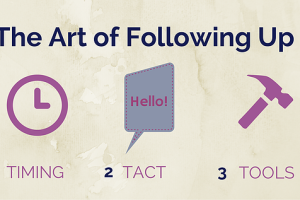You all know about the importance of asking the ‘why’ question in sales, right?
What about asking five why questions?
Five whys was a problem-solving technique introduced by Sakichi Toyoda, a Japanese inventor who worked for Toyota. Costly mistakes that arose during vehicle manufacturing meant that the whole mass production had to be stopped, which incurred significant losses. For this reason Toyoda came up with this technique to discover the causes of the most frequent mistakes so as to prevent them from repeating. He would ask ‘why’ to employees over and over again until they got at the bottom of why problems happened. Here is their famous example:
The vehicle will not start. (the problem)
- Why? – The battery is dead. (first why)
- Why? – The alternator is not functioning. (second why)
- Why? – The alternator belt has broken. (third why)
- Why? – The alternator belt was well beyond its useful service life and not replaced. (fourth why)
- Why? – The vehicle was not maintained according to the recommended service schedule. (fifth why, a root cause)
The technique was introduced in the 1970’s and remained in usage in Toyota until today.
“Why so many whys,” you might ask, “couldn’t just one do?”
When you ask just one why, people tend to give a superficial explanation to why the mistake happened.The goal is to go beyond the typical mindset of finding excuses, making assumptions and slipping under logical fallacies to get at the actual root of the problem. Once we penetrate through superficial layers, we can understand what the real problem is.
It is about the process
An interesting discovery of the Five Whys technique is that the final answer often indicates that the problem lies with a faulty process. This is one of the most important aspects of this approach: the real cause should show that a mistake lies in the process, and not the person.
People inexperienced with the technique often give answers such as ‘not enough time, money, or employees’. Although this might be true, the goal of Five Whys is not to talk about the problems we can not do anything about but those that we can:
“Okay, we all know there is not enough time in trying to accomplish X. This is hardly a new thing. The real question is, what are you going to do about it? How can you change the process so as to make more time?”
Using Five Whys in sales
The first thing they teach you in sales is that sales reps should solve clients’ problems for them. They should find their clients’ unknown weaknesses and offer solutions. Most importantly, they should offer their product as the solution.
However, how can you know the problem if you don’t ask? Sure, Internet research and data analysis will give you some clue, but if you want to get at the root of your clients’ problems, the best is to talk to them directly. And when I say talk, I mean to say listen — listen to their answers to your ‘why’ questions. Ask why over and over again until you have it figured out.
The biggest mistake you can make is impatience. Too keen to start convincing, sales reps often stop listening too early. They spew out all the info about the product at the prospect, hoping that some of it will strike a chord. Don’t do this.
Less is more, remember. Often our products have very many features. The trick is to figure out which features are germane to your prospect’s situation. Probe into your prospect’s problem as much as they allow. If you just listen long enough, your prospect will tell you everything you need to know. Most importantly, they will tell you on which of your product’s features you should focus during the sales conversation so that you do not waste the chance you have been given on reciting superfluous data. Moreover, this approach will also make you seem less as a seller and more as a knowledgeable problem solver.
Here is an example of how Five Whys work in sales:
You notice that an executive of a company has visited your CRM website a couple of times:
Why No.1
Rep: “We saw you were looking at our CRM page. Why are you interested?
Prospect: “We heard some nice things about your CRM, so we decided to check it.”
Why No.2
Rep: “Why did you visit the site several times?”
Prospect: “We really liked that your CRM had the option to record the last contact with a prospect.”
Why No.3
Rep: “Why is this so important for you?”
Prospect: “Because we are doing things a bit differently at the moment and we think that some of your CRM features would help our business.”
Why No.4
Rep: “Why would it help your business?”
Prospect: “Well, the spreadsheet system we are using at the moment is not regularly updated with all the info so our sales reps end up wasting a lot of time calling the same leads.”
Why No.5
Rep: “Why isn’t it regularly updated?”
Prospect: “Well, we often forget to do it right after the call. Actually, this is causing us to lose a lot of leads.”
And here we come to the root cause of the problem: because of an inefficient CRM system, sales reps are losing leads. In the next few conversations with the executive, address this problem, explain how easy it is to solve it with your CRM and mention the expected results: sales reps will save time, be better organized and win more sales.
Where else can this technique be employed?
Anywhere. You can benefit from this technique in pretty much any problem solving situation. It is a good habit to employ it in everyday life, with yourself, your partner, etc. Used to searching for easiest explanations, people give superficial answers to deep problems, not realizing that they get stuck in repeating the same mistake over and over again. Unable to see a way out, they feel despondent for being in a situation they think they cannot solve. They can. They just need to ask the right why.
A huge transition starts taking place in our mindset when we start asking why for the sake of finding an actionable way out of the situation instead of a justification for why we got ourselves into it.









Speak Your Mind